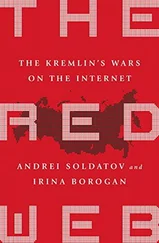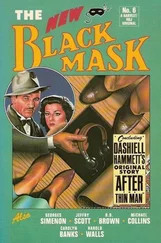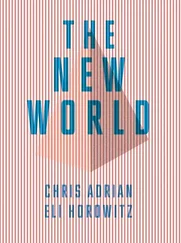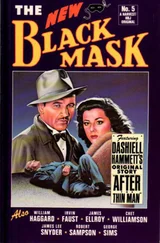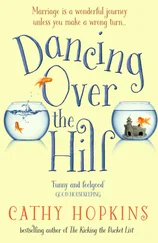3 3. Adorno is referring to Pierre Boulez and Karlheinz Stockhausen.
4 4. Although Sinn is usually translated here as ‘sense’, the word Sinnzusammenhang is rendered as ‘context of meaning’ owing to the established status of the term (Trans.).
5 5. Giulio Caccini (1551–1618) was one of the leading composers, singers and lutenists at the Florentine court. His opera Euridice was premiered in Florence in 1602. Jacopo Peri (1561–1633), Caccini’s rival in Florence, and likewise a singer and composer, also wrote a Euridice opera; at the premiere, a number of songs were sung in Caccini’s versions. Both men’s operas are among the oldest surviving works of the genre. Adorno also names the two composers in his sketch for the fictional music in Thomas Mann’s novel Doctor Faustus: ‘The lamenting of nymphs already found in the settings of Orfeo by Peri and Caccini’ (Theodor W. Adorno and Thomas Mann, Correspondence 1943–1955, ed. Christoph Gödde and Henri Lonitz, trans. Nicholas Walker [Cambridge: Polity, 2006], p. 125).
6 6. Every instance of the word ‘spiritual’ corresponds to geistig, and should thus be taken in the more encompassing sense of Geist as a combination of intellect and (artistic) spirit, rather than anything theological or metaphysical (Trans.).
7 7. See Max Horkheimer and Theodor W. Adorno, Dialectic of Enlightenment, trans. Edmund Jephcott (Stanford, CA: Stanford University Press, 2002), p. 28: ‘The elimination of qualities, their conversion into functions, is transferred by rationalized modes of work to the human capacity for experience, which tends to revert to that of amphibians.’
8 8. In 1950, the Viennese art historian Hans Sedlmayr had presented the arguments from his controversial polemic of 1948 against modern art, Verlust der Mitte [The loss of the centre], at a discussion in Darmstadt. Defending his position, Sedlmayr said:In a description formulated from an entirely different perspective, I found an excellent presentation of eminent dangers that I have not mentioned here: in the book by Adorno on the philosophy of New Music. Here he describes the extremely dangerous nature of this situation [the endangerment of humans and thus art at this time] in a way that made even me shudder, and it is all the more powerful because Mr Adorno’s worldview is otherwise worlds apart from mine. He presents the dangers of the situation with great mastery and relentless acuity. If Hindemith and Stravinsky cannot escape Mr Adorno’s judgement, which of the contemporary visual artists can do so? (Darmstädter Gespräch: Das Menschenbild in unserer Zeit, ed. Hans Gerhard Evers [Darmstadt: Neue Darmstädter Verlagsanstalt, 1951], p. 206)Sedlmayr also instrumentalized a passage from the Philosophy of New Music in his 1954 book Die Revolution der modernen Kunst [The revolution of modern art] and sought to invoke Adorno as a witness to the ‘shift towards senselessness’.
9 9. See, for example, the analysis of the andante from Brahms’s String Quartet in A minor:[It] contains six phrases in eight measures. The length of these phrases is 6+6+6+4+4+6 quarter notes. The first three phrases occupy four measures and three eighth notes (or four and a half measures). The first phrase ends practically on the first beat of measure 2. […] In Brahms’s notation these subcutaneous beauties are accommodated within eight measures; and if eight measures constitute an aesthetic principle, it is preserved here in spite of the great freedom of construction. (Schoenberg, ‘Brahms the Progressive’, in Style and Idea, pp. 435f.)
10 10. Owing to lack of time, this did not occur.
11 11. In a text from 1937 entitled ‘Zweite Nachtmusik’ [Second night music], Adorno writes:The first atonal works are transcripts in the sense of psychoanalytical dream transcripts. In the earliest book publication on Schoenberg, Kandinsky truthfully and shockingly called his pictures ‘brain acts’. Their substance carries all later form. But the wounds of that expressive revolution are the blotches that, on the pictures as much as in the music, entrench themselves almost against the compositional will as messengers of the id, disrupting the surface; like traces of blood in fairy tales, they cannot be magicked away through compositional corrections. The twelve-note technique still faithfully contains these blotches. (Theodor W. Adorno, Gesammelte Schriften, ed. Rolf Tiedemann et al. [Frankfurt am Main: Suhrkamp, 1970–86; henceforth: GS], vol. 18, pp. 46f.)Adorno reused these lines almost word for word in Philosophy of New Music and added a footnote: ‘These blotches are evident, for instance, in the tremolo passage in the first piano piece of op. 10, or in Erwartung, measures 10, 269 and 382’ (Adorno, Philosophy of New Music, trans. Robert Hullot-Kentor [Minneapolis: University of Minnesota Press, 2006], p. 177 [translation modified]).
12 12. Five Movements for String Quartet, op. 5 (1909).
13 13. Adorno’s review appeared in Zeitschrift für Musik (December 1924, issue 12), pp. 727–9. There he writes:Webern’s music ends with the psychological particle and mirrors at most the situation of a detached soul; it does not show the whole human. What is deeply characteristic is the rationalization of technical methods in pieces that consistently operate with tiny motivic fragments: as they lack a point of adhesion located beyond the musical domain, they seek to form in isolation within the musical domain, which is itself undermined by the psychological compulsion to expression and therefore enlists the help of abstract calculation. Nonetheless, on the miniature scale of the second and third movements, Webern’s power is fully evident. Yet, as much as one appreciates this highly self-critical and fanatically rigorous author, what ultimately remains is the awareness that his expressions belong to a deeply exhausted art, that their implacable nature confuses the private with the personal. (GS, vol. 19, pp. 45f.)
14 14. Adorno had evidently attended Pierre Boulez’s lecture ‘Claude Debussy et Anton Webern’ on 2 June, two days before his own lecture, in which Boulez said of Schoenberg:It is true that in Schoenberg, especially before 1918, one finds genuine orchestral writing. But after his discovery of the series – was he preoccupied specifically with problems of writing? I assume so, no one can know with certainty, but one can assume that it was the principal cause – even in the Variations for Orchestra, which are written for orchestra in principle, it is merely a magnified form of chamber writing with added doublings, and the writing is ultimately no more advanced than that of Brahms. That is, the writing is multiplied, the sum of parts is multiplied by the instruments, and the sonic volume of the large orchestra is produced by the instruments that are multiplied. (Pierre Boulez, ‘Claude Debussy et Anton Webern’ [1955], in Musik-Konzepte, Darmstadt-Dokumente I, ed. Heinz-Klaus Metzger and Rainer Riehn [Munich: edition text+kritik, 1999], pp. 77f.)
15 15. Adorno found this formulation [das Triebleben der Klänge] in the book Arnold Schönberg (Munich: Piper, 1912), with texts by Alban Berg, Paris von Gütersloh, K. Horwitz, Heinrich Jalowetz, W. Kandinsky, Paul Königer, Karl Linke, Robert Neumann, Erwin Stein, Anton Webern and Egon Wellesz. Karl Linke, speaking of Schoenberg as a teacher, writes:Now the theorist’s research begins. Here one discovers a B flat that pushes the sound in a different direction. This B flat must have consequences that were not submitted to. Now one must sound out what direction the texture would like to take, how long it will need to fall, and at which point it summons its strength to rise at the end. That is where Schoenberg speaks of a sexual life of the sounds. (p. 78)Translator’s note: although ‘sexual life’ is the standard equivalent of Triebleben as a scientific term, the German Trieb means ‘drive’, and can therefore potentially be used in a broader sense.
Читать дальше

